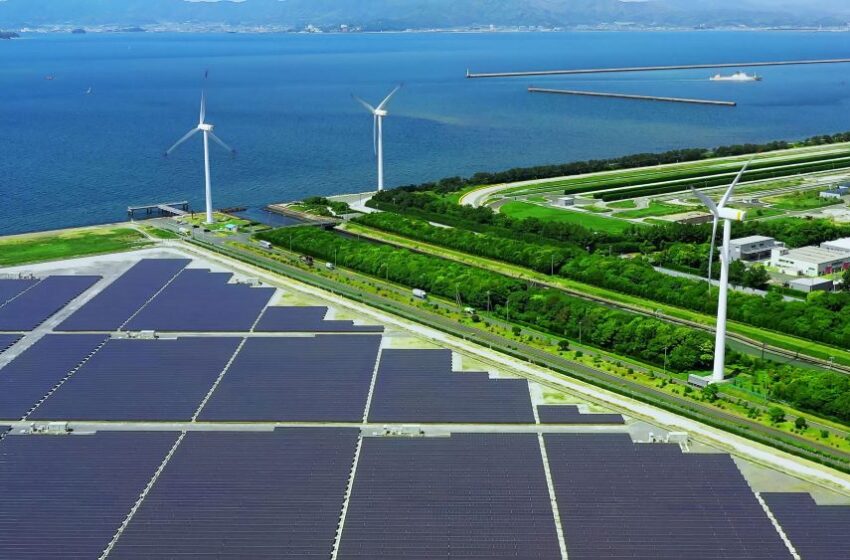
Seven Asian Nations Offer $1.1 Trillion Investment Potential in Renewables
The investment potential for solar and offshore wind power project supply chains exceeds $1.1 trillion through 2050, with the capacity to generate 873 gigawatts (GW) of clean energy, according to a new report from the Institute for Energy Economics and Financial Analysis (IEEFA).
The report focuses on seven Asian markets including Japan, South Korea, Malaysia, Taiwan, Vietnam, Philippines, and Indonesia. IEEFA calculates that up to 2050, solar PV plans aim to achieve 634 GW of capacity, requiring an investment of $394 billion, with $346 billion of that amount potentially to be spent on local supply chains. Offshore wind represents a $621 billion opportunity to deliver 239 GW of capacity, with $425 billion expected to be localised.
Additionally, there is an opportunity in the maritime sector worth $72 billion to $97 billion to build offshore wind installation and service vessels, with almost all this investment expected to be sourced regionally.
Grant Hauber, IEEFA’s Strategic Energy Finance Advisor for Asia, said that the report highlighted the here-and-now opportunity to capitalise on the renewable energy supply chain. Solar energy offers immediate investment benefits to the Asia Pacific, while the advantages of participating in the offshore wind supply chain will develop over the next several years, he explained.
“The report maps out each element in the project supply chain, quantifies the capital investment potential, and aims to encourage more ambitious and long-term policies, which helps investors and policymakers appreciate the size of the opportunity,” he said.
Looking Beyond Panels and Turbines
In addition to promising low-cost energy, there are opportunities to localize large proportions of the solar and offshore wind supply chains required for fully operational power generation projects.
“A key message for policymakers and industrialists is that you do not need to make solar PV modules or wind turbines to realize huge domestic manufacturing and investment benefits,” Hauber said.
According to the report, non-panel and non-turbine spending will account for at least 75% of total investment through 2050, representing a $770 billion opportunity for domestic industries over the next 25 years.
“There are materials, components, infrastructure, logistics, and services that can provide significant value to the domestic economy over sustained periods and potentially marketed regionally and beyond,” he said.
China currently dominates the global supply chain for solar PV panel manufacturing, delivering nearly 85% of global demand at costs that are unlikely to be matched for at least the rest of this decade. Outside of China, instead of producing PV modules, countries can direct domestic investment towards other project-level components that make up completed solar farms.
Hauber emphasised the concept of the balance of system (BOS), which comprises all costs and components beyond the solar panel. IEEFA calculates that BOS investments constitute the majority of PV farm costs, which, depending on the market, range from 55% to 75% of total project expenditure.
Currently, most Asia Pacific countries appear to be underestimating this opportunity. The report highlights that, despite nearly every country in the region having world-class solar and wind resources, planned renewable capacity additions remain a limited share of electricity supply.
For instance, Indonesia has one of the smallest solar bases in Asia, with the least aggressive additions relative to its available resources. Japan, despite having one of the best wind resources globally, has very modest offshore wind program targets, aiming for less than 5% of total demand by 2050.
According to Hauber, policy alignment is now needed to help countries realize this potential. Focusing on maximizing low-cost capacity additions at scale will create recurring demand, allowing local industries to capitalize on the solar and offshore wind supply chain.
“Ultimately, domestic businesses benefit from higher development volume, consumers benefit from the lowest long-run marginal cost of electricity, and the government benefits from both these wins and significant progress toward decarbonisation targets,” he added.















